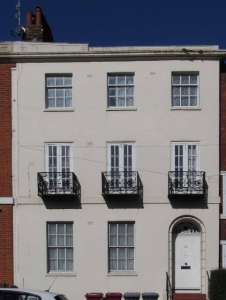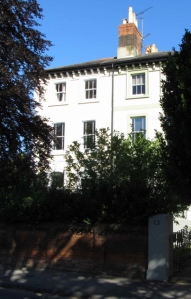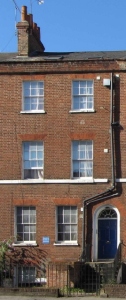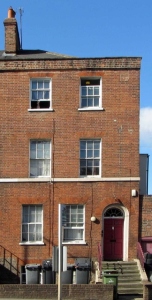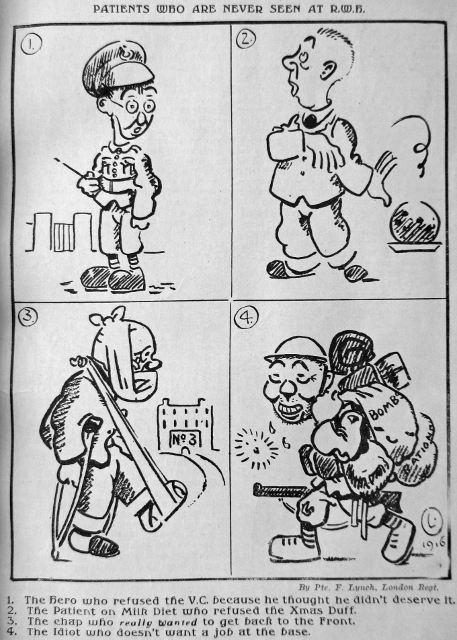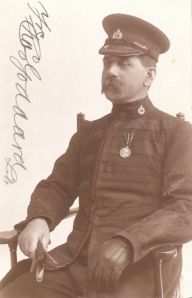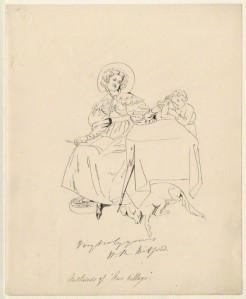During the latter half of the Nineteenth Century, a significant proportion of children in the care of the Reading Board of Guardians were sent to the Reading and Wokingham District School for the Boarding, Lodging and Educating of Pauper Children in nearby Wargrave. However by 1900, large institutions like Wargrave were perceived as expensive, old-fashioned and increasingly inappropriate. There was a growing emphasis on children being ‘boarded-out’, local authority adoption and emigration to Canada. The Reading and Wokingham District School closed in 1902, replaced (in part) with what were officially known as ‘Scattered Homes’.
Under the heading Reading Children’s Homes, Smith’s Reading Postal Directory of 1906, explained the new system:
‘These homes are established for the purpose of making provision for the destitute children coming under the care of the Guardians, instead of sending them to the Wargrave District School…Fifteen children are assigned to each Home under the care of a Foster Mother’ to ‘enjoy the benefits of home life and attend the public elementary schools in the town like other children.’
If you are researching a child in care or even a foster mother, old street directories are a very good place to start. By way of example, I have compiled the following draft list of Reading’s Scattered Homes between 1906 and 1912 using a combination of local directories, Board of Guardians Minute Books and the 1911 Census:
Reading Board of Guardians Scattered Homes 1906-1912
Headquarters & Receiving Home
Address: (1906) Reading Union Workhouse 344 Oxford Road
Address: (1907-1912) 13 Milman Rd
Superintendent: (1907-1911) Miss Helen Mary ROBERTS
Superintendent: (1912) Miss JM COX
Foster Mother: (1907) Miss SPENDER then Miss MUNN (who left 10th October 1907)
Foster Mother: (1907-1911) Miss Hilda Beatrice BLOOMFIELD (when she applied she was of 19 Filey Rd, Reading)
Foster Mother: (1912) Miss H GILBERT
NB: Due to a shortage of accommodation, HQ doubled as a temporary home during this period, hence the need for a foster mother
Scattered Homes
Camarra House
Address: (1906-1912) 229 King’s Rd
Foster Mother: (1906) Miss A N WALKER
Foster Mother: (1907-1912) Miss Rachel NUTTALL
Rosemont House
Address: (1906-1912) 231 King’s Rd
Foster Mother: (1906-1912) Mrs Adelaide FOSTER
Alexandra House
Address: (1906-1909) 59 Queen’s Rd
Address: (1911-1912) 40 Russell St
Foster Mother: (1906-1912) Miss Ellen VICKERS
Wilson House
Address: (1906-1909) 77 South St
Address: (1911-1912) 82 Crescent Rd
Foster Mother: (1906-1912) Mrs Kate DRIFFIELD
Cifford House
Address: (1906-1909) 75 South St
Address: (1911-1912) 84 Crescent Rd
Foster Mother: (1906-1912) Mrs Matilda Mary EDMUNDS
Palmer House
Address: (1906-1912) 11 Milman Rd
Foster Mother: (1906) vacant
Foster Mother: (1907) Mrs BEEDLE replaced by Miss ADAMSON (who left 10th October 1907)
Foster Mother: (1907-1909) Mrs M COOMBE (when she applied she was of Rugby House, Bexley, Kent)
Foster Mother: (1911-1912) Miss Elizabeth SCOTT
Sutton House
Address: (1906) 11-13 Milman Rd
Address: (1907-1909) 74 Southampton St
Address: (1911-1912) 77 South St
Foster Mother: (1906) Miss E T WALES
Foster Mother: (1907-1909) Miss RICHARDSON
Foster Mother: (1911) Miss Constance Margaret MABBS
Foster Mother: (1912) Miss A BARTON
Ashberry House
Address: (1906-1909) 72 Southampton St
Address: (1911-1912) 75 South St
Foster Mother: (1906-1907) Miss N LOWE (left 24th October 1907)
Foster Mother: (1907-1908) Miss JJ SAVORY (when she applied she was of 71 Cotham Brow, Bristol. Succeeded in October but left 3rd January 1908)
Foster Mother: (1908-1912) Miss Ella LAIDLAW (when she applied she was of 10 Rose Lane, Mossley Hill, near Liverpool)
There’s lots of background information about the ‘scattered homes’ system on-line via a quick search on Google but the BBC Radio 4 programme on the subject (reviewed by Sheffield Libraries, Archives and Information blog in April 2015) and Peter Higginbotham’s Workhouse website are useful introductions. More locally, I would highly recommend Elizabeth Lloyd’s blog ‘Lost in the Past’, which includes a great article about Guildford’s Scattered Homes here.
© Emmy Eustace

